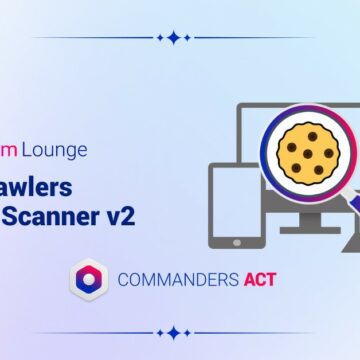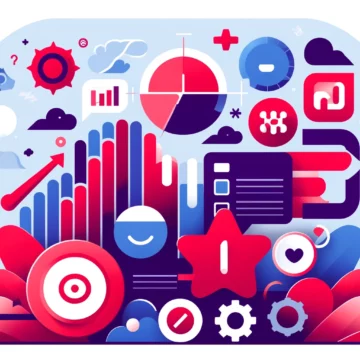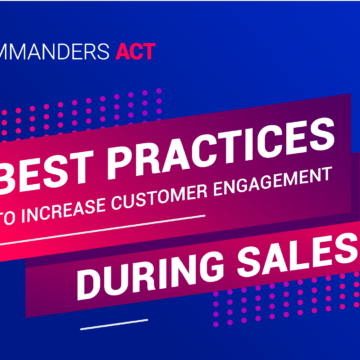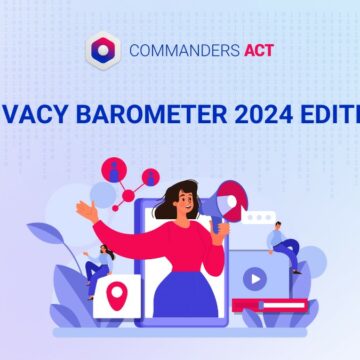Customer Data Platform: five key benefits
03/12/2019 |

What can you expect from a Customer Data Platform (CDP)? What role does it play alongside existing solutions (CRM, marketing automation, etc.)? How can it help address the major challenges inherent in omnichannel marketing, people-based marketing and first-party data? Read on for the answers.
What can a CDP (Customer Data Platform) bring to a marketing technology landscape already featuring over 7,000 players? Admittedly, the question is bound to arise for a marketing department that is already juggling the use of several solutions at the same time, such as CRM, marketing automation and paid campaign management (display, SEA, etc.). The first answer is that CDPs are not intended to replace the company’s legacy solutions. In the hands of a marketing professional, a CDP is more like a conductor’s baton, but with five benefits to boot.
#1 – Keep track of your data
It’s a fact: although the SaaS solutions that exploded during the cloud era offer several advantages (quick activation, elastic load balancing, and so on), they have a downside, especially when it comes to marketing tools. With each solution added to the existing stack, data are fragmented to such an extent that in large organisations, it is often a tricky process identifying the actual data source that is so essential for calculating conversion rates, completing the insight into the customer journey or assessing a channel’s contribution for allocation purposes.
The level of fragmentation becomes blindingly obvious when producing a dashboard: the inventory of sources that need aggregating can often make your head spin… Not surprisingly, data fragmentation affects marketing team productivity and creativity. It is hard devising new scenarios without a clear and global view of the available data. So this is the first purpose of a CDP, namely group all the data together (leads, customers, anonymous data, personal data, offline and online) to simplify the process of reconciling and leveraging the data beyond the company’s technical and organisational silos.
#2 – Look after your first-party data
When it comes to marketing data, 2018 was a minefield. It was so not only with the GDPR (General Data Protection Regulation) which became effective in May 2018, but also with the growing use of algorithms on social networks and the significant fall in organic reach. What that actually means is that organisations have seen their email databases melt away after a GDPR audit (since they were poorly acquired from third parties), whereas they are also required to increase their paid social budget to continue engaging their audiences on social media platforms…
This spate of events reveals why the topic of first-party data is a necessary conversation piece. Awareness has definitely grown. Brands have realised that their ability to forge a long-term personalised relationship with their audiences requires work on the sovereignty of their data. Only first-party data can be considered to be a company asset. That explains why brands are so interested in all the mechanisms that can help expand and nurture their first-party data (website logins, newsletter subscriptions, data collection at the checkout, etc.). CDPs may be equipped to work with first-party data, but they are primarily designed to act as a repository and incubator for such data.
#3 – Talk to people (and not to devices or browsers)
This is the major limitation with digital marketing. In the eyes of the different activations, audiences are often only considered to be devices identified by an advertising ID in the case of smartphones or browsers tracked via cookies. But the bottom line is that marketing is aimed at talking to people and not devices. Both conversations and personalisation only make sense when dealing with people.
This people-based outlook underlies CDPs. To make it a reality, the CDP is designed to bring together anonymous data (cookies) and personal data (typically stored in the CRM). That is why the Commanders Act CDP incorporates FuseCommander, a reconciliation engine aimed at generating a 360° view of the lead and customer data. That view may range from digital technology to the call centre and the touch points in the store.
#4 – Procure the means to take action across all channels
Banks, insurance companies, fast food chains, mass-market retailers… they all need to deal with the famous customer journey that now contains two key characteristics. Firstly, the journey is anything but linear from one customer to another, and secondly it features a mix of online and offline content. This mix can even be found in the customer journey of millennial audiences. In that mix, no drivers or touch points alone can be considered to be decisive…
In an omnichannel context, CDPs play their role as a conductor to the full by testing all the online and offline touch points in various scenarios in order to exploit them alongside their legacy tools. The aim is to produce a personalised experience (i.e. people-based) that makes best use of each channel, whether stores, call centres, websites, social networks or email campaigns.
To achieve that goal, CDPs aggregate the data from all the touch points and take advantage of all the data attributes (an advertising campaign, consumed content, purchase history, etc.) to develop customer intimacy. These are the data that CDPs can use to suggest an audience segmentation and the corresponding activations on an omnichannel scale.
#5 – Initiate a virtuous circle, from orchestrating to optimising activations
As the conductor, the CDP activates the available solutions according to the identified segments and also creates a history of the performance of the different scenarios and the weight of each channel. In light of the volume of data accumulated, it is easy to lose your bearings. Therefore, the CDP must be capable of providing intelligible insights into the data. Overall data visualisations are ideal for viewing the degree of data reconciliation, the key audience segments and the weight of the channels and their level of dependency – such as viewing whether the display investment increases the natural search traffic.
Legibility of the performance levels, especially legibility of the segment-activation combinations, is particularly critical, since the CDP is clearly designed for marketing teams… in their entirety. CDPs are designed to help teams share their audience insights and thereby overcome the divides that typically exist between departments (loyalty, acquisition) or types of expertise (media purchase, SEA, social media management, brand content, lead generation). Obviously, the tool alone is not enough. But when combined with a proactive strategy to improve marketing agility and transform data into a real corporate asset, CDPs can significantly help bring viewpoints together.
Check out our white paper entitled “Customer Data Platform: the new co-pilot today’s marketer“











